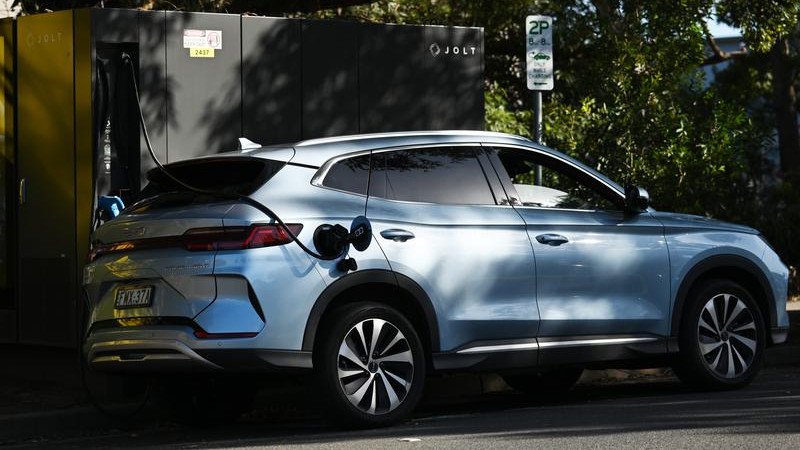Australian on-road tests reveal top-selling EVs like BYD Atto 3 and Tesla Model 3 fall short of promised range

Some of Australia’s best-selling electric vehicles fail to meet their advertised range and consume significantly more power than manufacturers promise, on-road tests reveal.
One popular SUV performed particularly poorly, stopping short of its advertised range by more than 100km.
The Australian Automobile Association released the results on Thursday after testing five electric vehicles as part of its $14 million Real-World Testing Program.
Sign up to The Nightly's newsletters.
Get the first look at the digital newspaper, curated daily stories and breaking headlines delivered to your inbox.
By continuing you agree to our Terms and Privacy Policy.The findings come one week after the program revealed 25 out of 30 petrol and hybrid vehicles tested had consumed more fuel than their lab results showed and more than three in every four vehicles examined had failed to meet expectations.
The motoring body road-tested five electric vehicles in its first trial of the technology, using a 93km circuit around Geelong in Victoria in damp and dry conditions, and measuring the vehicles’ energy consumption.
BYD’s Atto 3 SUV produced the worst result of the models tested, falling short of its promised range by 111km or 23 per cent, and using 21 per cent more power than advertised.
Tesla’s entry-level electric car, the Model 3, also failed to meet its promised range by 14 per cent, or 72km, and used six per cent more electricity than lab results showed.
The Tesla Model Y and Kia EV6 SUVs also failed to meet their range by eight per cent, or just over 40km, while the Smart #3 electric car came the closest to its lab test results, falling within five per cent or 23km of the advertised range.
The results could help families and fleet managers make choices about their next vehicle purchases, association managing director Michael Bradley said, as research showed range anxiety remained a significant concern for buyers.
“As more EVs enter our market, our testing will help consumers understand which new market entrants measure up on battery range,” he said.
An electric car’s range could be affected by a number of factors, Australian Electric Vehicle Association national president Chris Jones said.
These include high or low temperatures, headwinds, steep terrain, and the use of air conditioning and heating features.
Car makers should seek to “under-promise and over-deliver” when it comes to vehicle range, he said, to allow buyers to make informed choices about the models that will suit their needs.
“It is frustrating that manufacturers are inflating the values when they really ought to be a bit more conservative,” Mr Jones said.
“I would have thought a 10 per cent difference was reasonable but 20 per cent is pretty bad.”
Electric vehicle range is typically tested in Australia using the older New European Driving Cycle (NEDC) laboratory test, but this will be replaced by the more accurate Worldwide Harmonised Light Vehicle Test Procedure (WLTP) from December.
The Australian Automobile Association’s vehicle-testing program, funded by the federal government, has examined 114 fuel-powered vehicles since it began in 2023 and found 88 models, or 77 per cent, failed to meet their advertised energy consumption.
